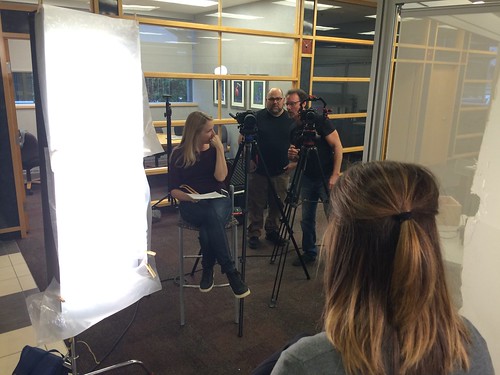vity Map is a collection of genome-wide transcriptional expression data from cultured human cells treated with bioactive small molecules. As of July A signature is a relatively short list of genes associated with disease or drug effects, and can be derived either by manual curation or automated filtering from high-throughput experiments. In this work, signatures are directly derived from disease/ drug expression profiles by taking the most changed nonredundant genes. We first removed hypothetical and notsignificantly-changed genes if the P-value is available; then selected a total of For each GEO GDS dataset together with its associated annotation summary, a Python program modified from a previous version was used to extract every subgroup of samples with  clearly defined conditions, generate pairs between any two biologically comparable subgroups, and perform cyber-T test for each of these pairs. For example, if a dataset has two subset types T and D, and each subset type has two conditions TWe first reformatted each disease/drug profile by ranking the probe sets according to their signed fold changes. For those profiles with P values, significantly and insignificantly changed probe sets are ranked separately by their fold changes first, and then merged by inserting the ranked but insignificantly changed probe sets into the +/MeSH is 10542155 the National Library of Medicine’s controlled vocabulary thesaurus. It consists of sets of terms naming descriptors in a hierarchical structure that permits searching at various levels of specificity. We downloaded the disease tree file mtreeThe signed cyber-T t-statistic values were used to calculate a Pearson correlation. For each pair of profiles, we only included those probe sets that are the most appropriate gene representatives, and they must be ��meaningfully��changed in at least one of the profiles. In addition, the number of ��meaningfully��changed genes in each profile must be more than GEO and CMap do not match corresponding MeSH terms. For a subset of The DrugBank database stores drug data with corresponding drug target and treatment indication information. As of July The plant hormone auxin plays crucial roles in plant development. While one F-box protein mediated signal transduction route has been discovered, mechanisms of auxin signalling are still partially unknown. Effects of differential Genz-112638 accumulation of auxin have been closely analyzed in Arabidopsis roots, where auxin mediates stem cell specification, maintenance of the root meristem, patterning and growth. At the cellular level, auxin is interpreted differentially in a tissue- and dose-dependent manner. Auxin concentrations that promote cell expansion in shoot tissues inhibit cell elongation and promote cell division in roots suggesting that in addition to the importance of auxin distribution and local auxin concentration, differences of cell responsiveness also play critical roles. In the presence of auxin, Aux/IAA transcriptional repressor proteins are recruited by the F-box protein TIRPrimary root growth is sustained by cell division within the root meristem, which ensures the continuous production of new cells that elongate and differentiate. Accumulating evidence indicates that auxin controls cell identity, cell division and cell expansion in a dose-dependent manner. The primary root exhibits a longitudinal gradient of cell differentiation overlapping an instructive gradient of auxin. Thus, we used the Arabidopsis root as a model to dis
clearly defined conditions, generate pairs between any two biologically comparable subgroups, and perform cyber-T test for each of these pairs. For example, if a dataset has two subset types T and D, and each subset type has two conditions TWe first reformatted each disease/drug profile by ranking the probe sets according to their signed fold changes. For those profiles with P values, significantly and insignificantly changed probe sets are ranked separately by their fold changes first, and then merged by inserting the ranked but insignificantly changed probe sets into the +/MeSH is 10542155 the National Library of Medicine’s controlled vocabulary thesaurus. It consists of sets of terms naming descriptors in a hierarchical structure that permits searching at various levels of specificity. We downloaded the disease tree file mtreeThe signed cyber-T t-statistic values were used to calculate a Pearson correlation. For each pair of profiles, we only included those probe sets that are the most appropriate gene representatives, and they must be ��meaningfully��changed in at least one of the profiles. In addition, the number of ��meaningfully��changed genes in each profile must be more than GEO and CMap do not match corresponding MeSH terms. For a subset of The DrugBank database stores drug data with corresponding drug target and treatment indication information. As of July The plant hormone auxin plays crucial roles in plant development. While one F-box protein mediated signal transduction route has been discovered, mechanisms of auxin signalling are still partially unknown. Effects of differential Genz-112638 accumulation of auxin have been closely analyzed in Arabidopsis roots, where auxin mediates stem cell specification, maintenance of the root meristem, patterning and growth. At the cellular level, auxin is interpreted differentially in a tissue- and dose-dependent manner. Auxin concentrations that promote cell expansion in shoot tissues inhibit cell elongation and promote cell division in roots suggesting that in addition to the importance of auxin distribution and local auxin concentration, differences of cell responsiveness also play critical roles. In the presence of auxin, Aux/IAA transcriptional repressor proteins are recruited by the F-box protein TIRPrimary root growth is sustained by cell division within the root meristem, which ensures the continuous production of new cells that elongate and differentiate. Accumulating evidence indicates that auxin controls cell identity, cell division and cell expansion in a dose-dependent manner. The primary root exhibits a longitudinal gradient of cell differentiation overlapping an instructive gradient of auxin. Thus, we used the Arabidopsis root as a model to dis
Calcimimetic agent
Just another WordPress site
